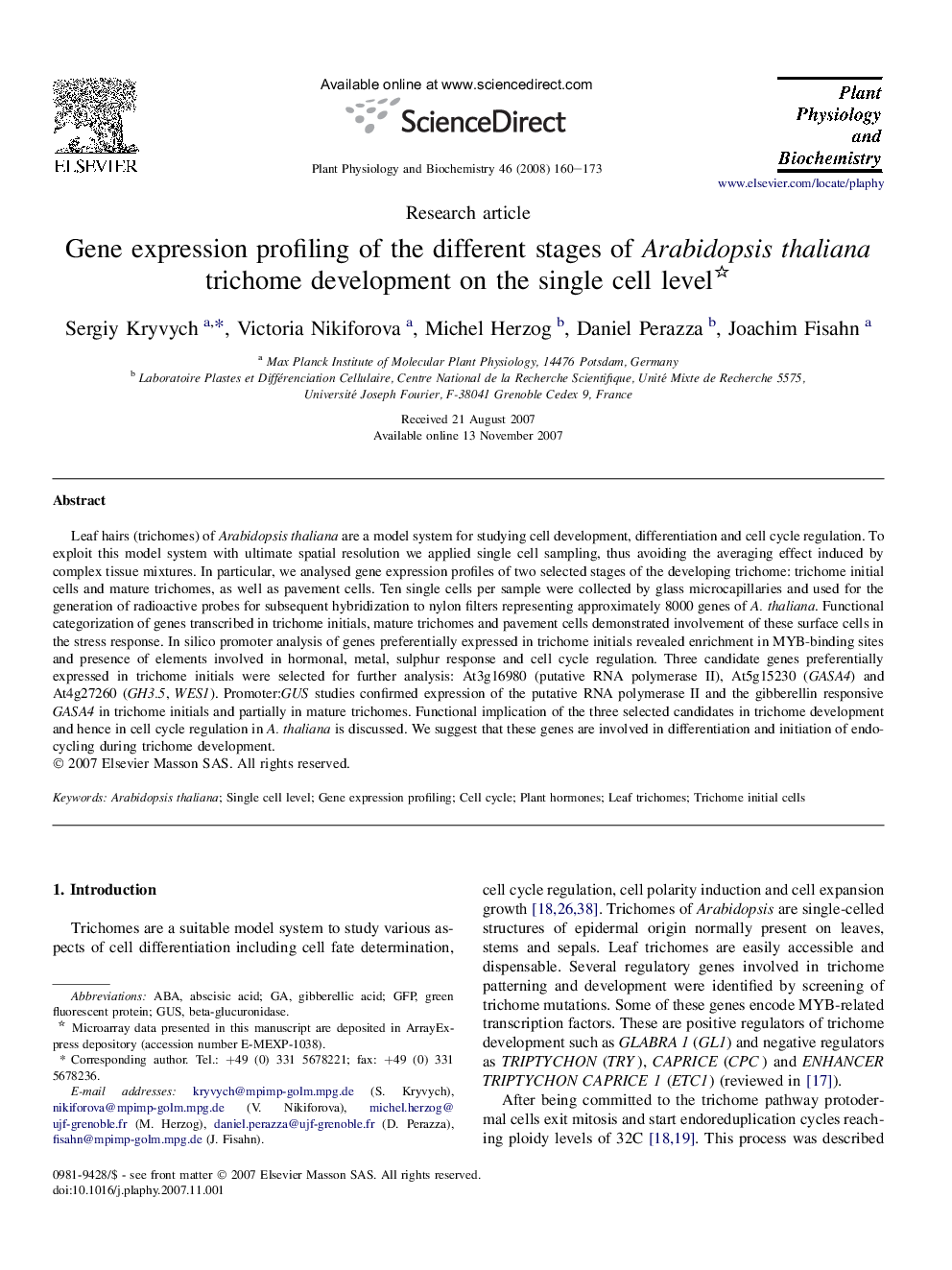| Article ID | Journal | Published Year | Pages | File Type |
|---|---|---|---|---|
| 2015401 | Plant Physiology and Biochemistry | 2008 | 14 Pages |
Leaf hairs (trichomes) of Arabidopsis thaliana are a model system for studying cell development, differentiation and cell cycle regulation. To exploit this model system with ultimate spatial resolution we applied single cell sampling, thus avoiding the averaging effect induced by complex tissue mixtures. In particular, we analysed gene expression profiles of two selected stages of the developing trichome: trichome initial cells and mature trichomes, as well as pavement cells. Ten single cells per sample were collected by glass microcapillaries and used for the generation of radioactive probes for subsequent hybridization to nylon filters representing approximately 8000 genes of A. thaliana. Functional categorization of genes transcribed in trichome initials, mature trichomes and pavement cells demonstrated involvement of these surface cells in the stress response. In silico promoter analysis of genes preferentially expressed in trichome initials revealed enrichment in MYB-binding sites and presence of elements involved in hormonal, metal, sulphur response and cell cycle regulation. Three candidate genes preferentially expressed in trichome initials were selected for further analysis: At3g16980 (putative RNA polymerase II), At5g15230 (GASA4) and At4g27260 (GH3.5, WES1). Promoter:GUS studies confirmed expression of the putative RNA polymerase II and the gibberellin responsive GASA4 in trichome initials and partially in mature trichomes. Functional implication of the three selected candidates in trichome development and hence in cell cycle regulation in A. thaliana is discussed. We suggest that these genes are involved in differentiation and initiation of endocycling during trichome development.
